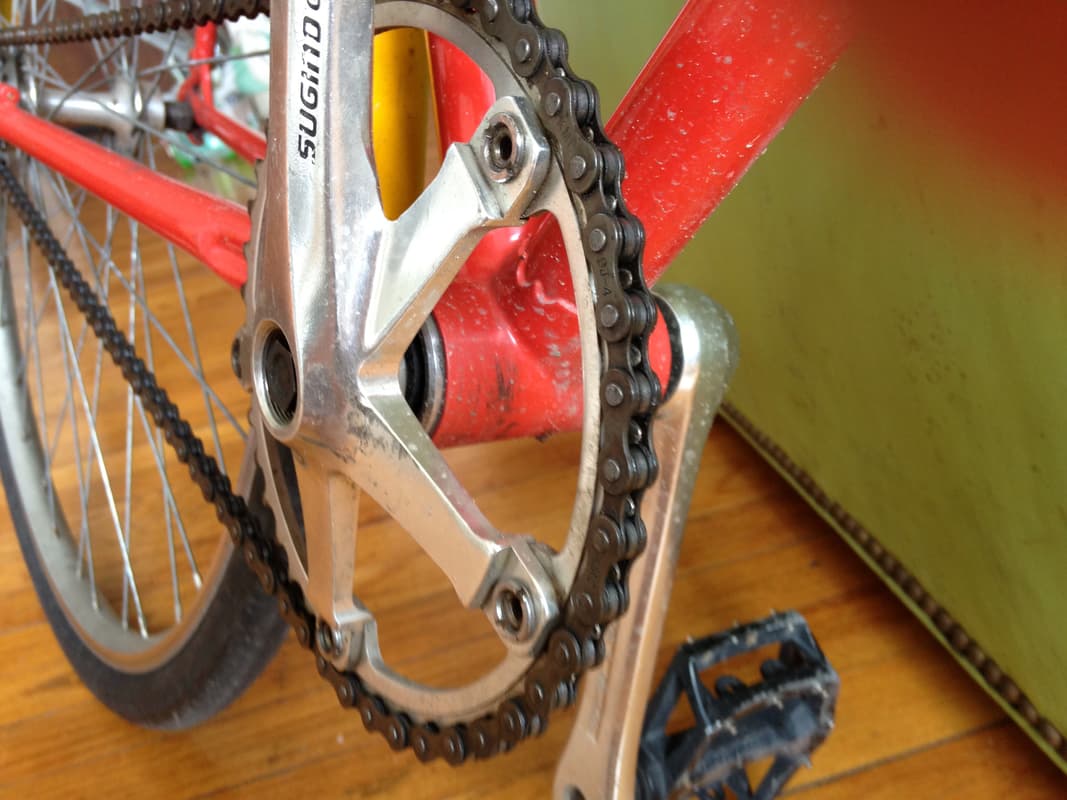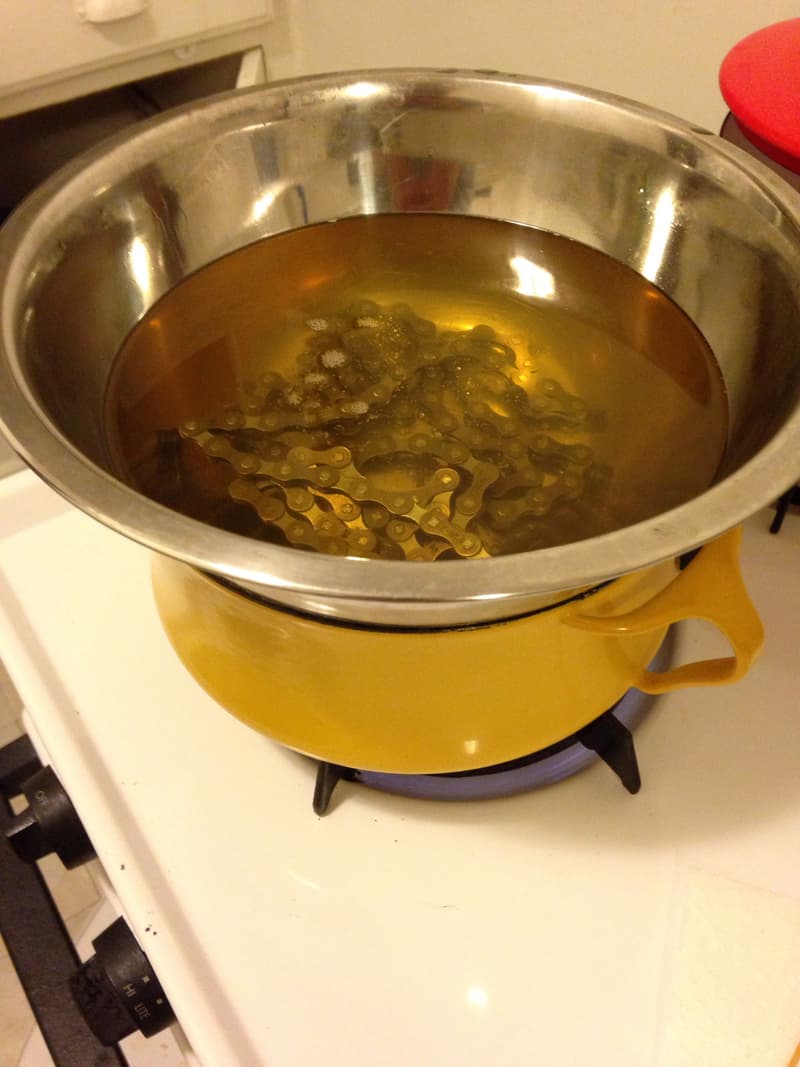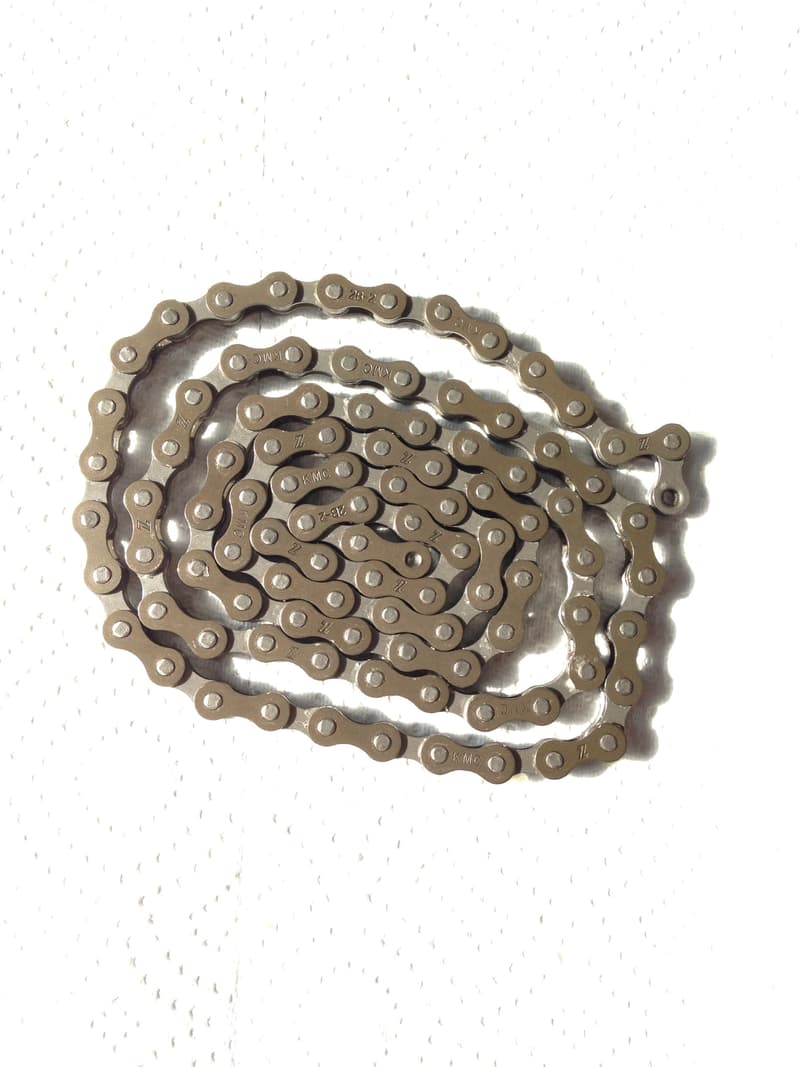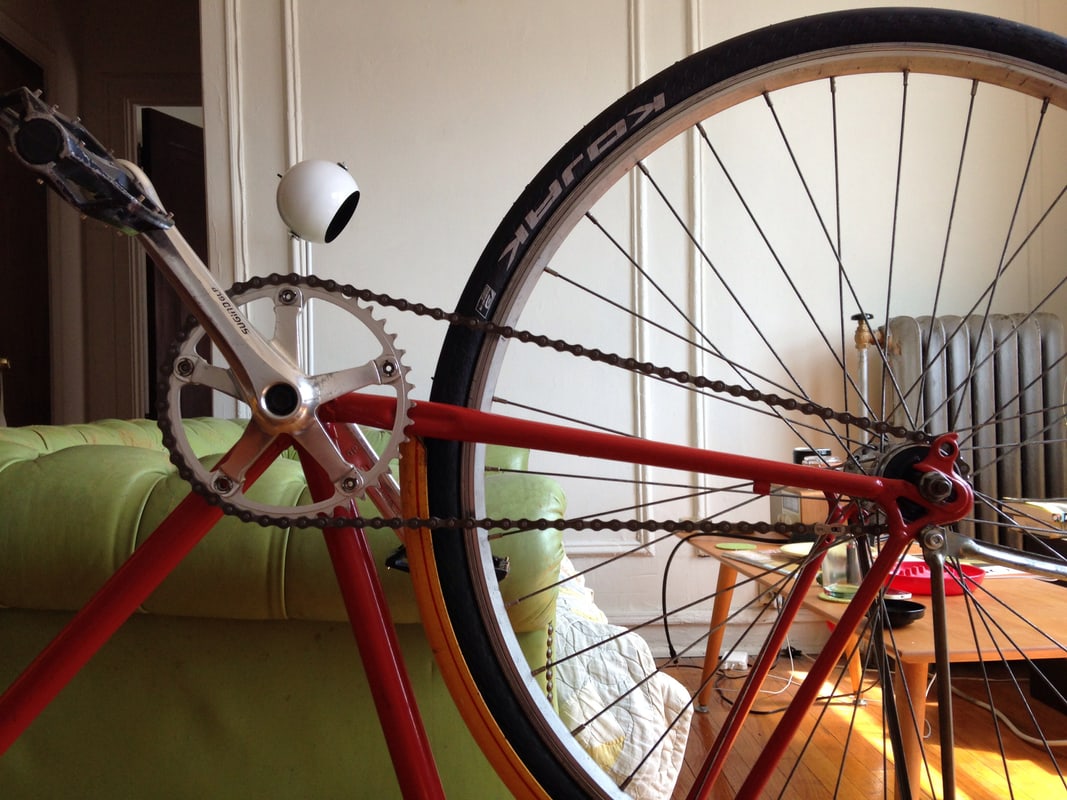I An experiment in chain waxing (part one). i
It has now been several bikes since my last post. The latest is a cool old Centurion frame, with a motley assortment of components, single-speed wheels (I won’t say “wheelset” since there are different rims front and back), a cool newer red powdercoat, and crazy yellow Schwinn steel fenders. On Bikeforums they told me the frame probably began life as a late 70s Super LeMans. It rides nice and smooth, and it’s great to have a reliable bike again after a bikeless month.
However, I was growing frustrated with greasy pant legs. I tried the little velcro straps, and I tried rolling up my pant legs higher than usual, and it was just a pain in the ass and nothing really helped very much. I considered chain guards, but the cheap ones don’t seem as if they’d work very well, and the good ones were expensive. Plus, who needs more thin metal parts on a bike to rattle and vibrate?
A little while ago I’d read Ecovelo’s Chain Waxing 101 series of blog posts, and I was intrigued, but also skeptical. Everyone except a few wild-eyed wax partisans seemed to agree that wax might be clean, but that it’s a terrible lubricant. I’d used Chain-L on my previous bike because I wanted a quiet drivetrain—and indeed it had worked very well, but it had also been fairly messy. But then Velo Magazine and Friction Facts did a comprehensive, empirical survey of 30+ chain lubes, measuring efficiency on a special device, and—what the fuck—ordinary paraffin actually beat every other lube tested.
I don’t know how valid those results really are, but they do seem to indicate that paraffin is at least not dramatically worse than oil-based lubricants—which is more than good enough for me, given the advantage in cleanliness. Will wax stand up to the rainy Chicago spring we’ve been having? Will it be quiet enough? It seemed worth a shot. Anything would be better than this:
Alan Barnard of Ecovelo said that he preferred Yaley candle wax purchased at Jo-Ann Fabrics, so that was my first stop. Unfortunately, Jo-Ann no longer carries any type of block wax. Next I tried Menard’s, where they looked at me like I had two heads. On the third try, I was successful: Michaels carries both candle wax (paraffin) and beeswax. It was a bit more expensive than I’d expected: a 4 lb block of candle wax and a 1 lb block of beeswax came to about $40. Suddenly that fancy hand-made porteur chaincase from Velo Orange didn’t sound so expensive, but oh well.
I got home, took off the chain (which was trivially easy using the fantastic KMC Missing Link reusable master link that the previous owner had installed), and started to clean it up. But as the layers of grime washed away, I realized that there was actually quite a bit of rust on the chain. It was still usable, but I didn’t really want to go through all the work of applying wax to a chain that was nearing the end of its life, so I went to the bike shop for a new chain, chain tool, and some citrus degreaser (I’d hoped to use Dr. Bronner’s Sal Suds, and it was more or less working, but I wanted something that would work faster).
The Ecovelo instructions really downplay the difficulty of degreasing the old drivetrain. Getting all of the grease off the chainring and freewheel was fiddly and time-consuming, but straightforward enough. Getting the factory grease off of the new chain was another matter. I put the chain in a plastic container with enough undiluted citrus degreaser to completely submerge it, shook it for a few minutes, let it soak, then shook it again. I did this twice, soaking for 15 minutes the first time, and 45 minutes the next time. Even after this, and after cleaning off the degreaser with 70% rubbing alcohol, there was still a thin but noticeable layer of (clean) lubricant of some kind on the chain—it didn’t feel like bare metal. At this point I decided to just go ahead and wax it anyway.
Above is my DIY double-boiler. This part went pretty smoothly. Alan at Ecovelo recommends an 8-1 paraffin-to-beeswax ratio, but it rains a lot more here than it does in Sacramento, and he also says that Grant Peterson recommends a 4-1 ratio, so that’s what I used. (My understanding is that more beeswax makes the wax more resilient but also dirtier.) I didn’t really have anywhere to drip-dry the chain, so I just held it over the bowl of wax for a minute, then wiped it down, then let it dry on a few sheets of paper towel:
And back on the bike:
The chain feels nice and clean. There is a bit of wax flaking, but hopefully that will subside. It seems to turn smoothly (at least smoothly enough to make me realize how much bearing noise there is in my Shimano freewheel—this might just be the excuse I’ve been looking for to buy one of the beautiful White Industries freewheels they have on display at Comrade Cycles). After I’ve had a few weeks to ride with the new chain, I’ll post an update here.




